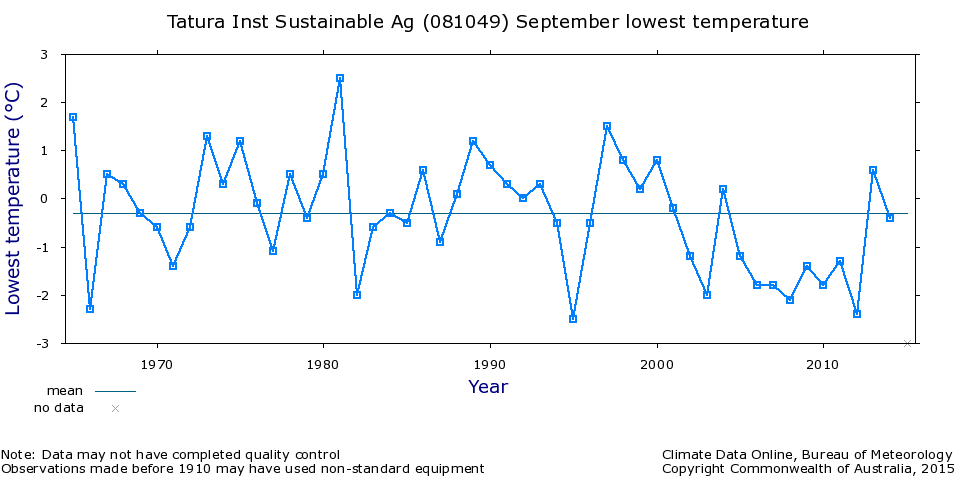
![]()
by Veronique Froelich
FGVL IDO
Our orchards are mostly affected by radiation frost in winter: the ground and ambient air cool down due to the loss of heat in the atmosphere, especially when we have clear skies and no wind. Radiation frost begins at ground level and gradually rises to higher objects.
The following charts show the lowest temperatures ever in September months recorded at 9 am over the past decade, in various locations (or close to) where members of FGVL grow their fruit. They tell us that most of us can still expect freezing temperatures (-2, -3degrees) in September.



What you can do to reduce the chance of frost damage:
1. Check the Bureau of Meteorology information for frost forecast in your region. Evaluate where the trees are up to regarding blooming times of your fruit varieties, as the risk of frost damage is greater if bloom comes early.
2. Observe the conditions around your farm: fog, clouds, high humidity and wind tend to slow dropping temperatures and protect crops from frost. Clear, still nights, with low air moisture are a warning of higher frost risk . If your orchard is located inland, locate potential frost-prone areas by pinpointing where the fog develops first.
3. Evaluate the risk that your particular farm’s layout presents. Because cold air flows downhill like water, low spots where it can collect will be more affected by frost. Trees that are downslope of obstacles (buildings for example) that slowdown cold air drainage are more at risk. On the contrary, trees downslope of a pond/lake will be less exposed.
4. Rely on passive practices first: 3 rules of thumb: 1) Keep the soil moist if you can. 2) Avoid cultivating 3)Cut the ground cover.
